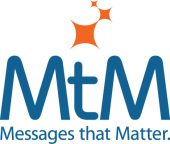I was involved in a positioning project where I almost got axed for advocating that we needed to pick one target buyer; I thought it should be the CIO. But the client insisted that every deal is different with different buyers, and it was even suggested that we needed to message to the end user, not to mention the CEO, COO, CFO, line of business manager, and the list went on. It was no way to start a project because no matter the buying situation, one of the keys to successful positioning is to make the tough choice, and decide who usually is the most influential person in the buying process.
Ironically, you can have the best of both worlds, but only if you start your positioning process by determining the title of the person most likely to be the key decision maker. What? You don’t have a business process for positioning. If that’s the case, check out the content on my web site. You’ll learn a lot about B2B positioning, including the importance of making choices throughout the process and being ruthless about them.
One step in the Messages that Matter positioning process is to identify key target audience problems. The idea is to rank the problems, and then use the No. 1 problem as one of the criteria for developing your positioning statement. I can’t emphasize enough the importance of recognizing that your positioning statement should address the target audience’s most pressing problem.
But it’s hard to determine the No. 1 problem when you believe the CEO, COO, CIO, CFO, etc., all have an equal role in the purchase process. The CIO’s problems are likely to be different than the CFO’s, etc. It becomes a tangled mess with no clear choice for the No. 1 problem. Thus the positioning process has the potential to become muddled.
A better way is to select – even if it’s hard to do – a target buyer for your message strategy. By the way, a message strategy includes a positioning statement and three to four support points.
The positioning statement articulates a high-level benefit that addresses the No. 1 concern of the target buyer. The support points unfold the story in more detail. The ideal response to your positioning statement is, “that’s interesting. How do you do it?” Support points explain how you do it.
While there are many steps in the process, once you have developed your message strategy, you can test your positioning statement by asking, “Does it address the target buyers’ most pressing problem.” When the answer is yes, you can then do another test, and adapt it to other target audiences.
Selecting one target audience initially simplifies the positioning process, and makes it go a lot faster. Plus adapting your message strategy is easier than you might think. In some cases, it requires changing just a few words here and there. In other cases, rewording and reorganizing is necessary.
When it requires a lot of work to adapt to a target audience, like the end user, remember that the message strategy is conceptual, and is not intended to be used verbatim. So for example, you might say to the CIO, “we help accelerate how business gets done in your company.” For the end user, the same idea is expressed “do more in less time.”
There are many potential missteps you can take in the positioning process. Failing to select a target buyer has the potential to get you off track early in the process, making recovery particularly challenging. It is a lot easier to pick a target buyer, and create a message strategy based on that decision. Then adapt it to target audiences. If the message strategy can’t be adapted unless you do a lot of contortions, start over and create one that can.
